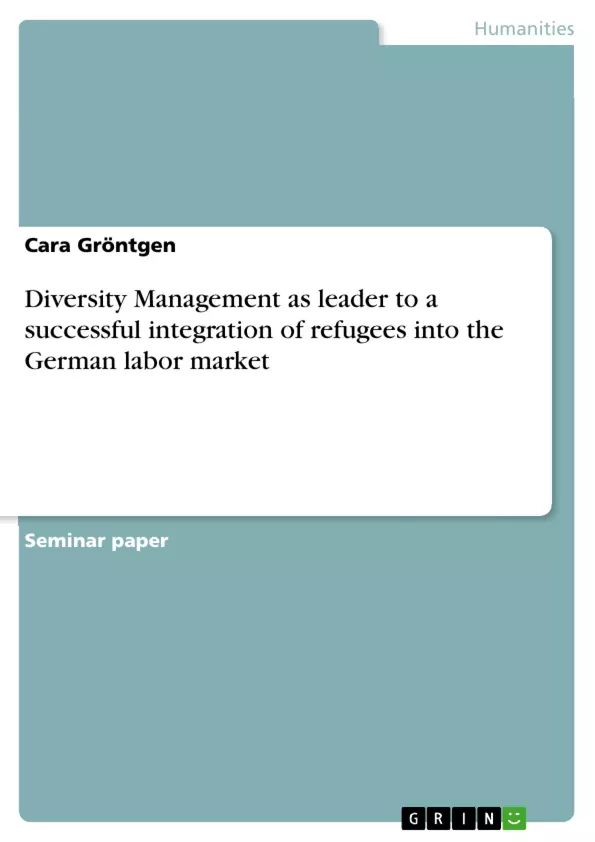The research question of this paper is, "How does Diversity Management lead to a successful integration of refugees into the German labour market?" In order to answer this question, this research paper first gives an overview of the term "Diversity Management" with its definition and objectives. Furthermore, the current refugee crisis will be analysed in short, by giving an introduction of the term "refugee" itself and an overview of the facts and figures of the current crisis as well as the legal requirements for entering the German labour market. The last and biggest part will deal with the integration of refugees into the labour market. By doing so, special attention is payed to the measures of the Diversity Management and the arising benefits that come along with that.
During the last decades, Germany has become a country of diversity. This is not only justified by an increasing number of immigrants, but also because of the current refugee crisis. In most cases, the refugee crisis is stated as something negative, but it is possible to turn this negative thinking into a positive one. With the help of a successful Diversity Management, all these incoming refugees are able to be integrated into the German labor market. They can set the basis for new workforces in German companies and prevent shortages, since a lack of qualified workers due to the demographic change will arise in the close future.
Inhaltsverzeichnis (Table of Contents)
- Introduction
- Diversity Management
- Definition
- Objectives
- Current refugee crisis
- Definition of the term migrant
- Definition of the term refugee
- Refugee crisis
- Refugee policies
- Access to labor market
- Integration of refugees
- Measures
- Measures with Diversity Management
- Benefits
- Conclusion
Zielsetzung und Themenschwerpunkte (Objectives and Key Themes)
The research paper examines how Diversity Management contributes to the successful integration of refugees into the German labor market. It aims to understand the role of Diversity Management in addressing the challenges and opportunities presented by the refugee crisis.
- Definition and objectives of Diversity Management
- Analysis of the current refugee crisis
- Integration of refugees into the labor market
- Measures and benefits of Diversity Management in refugee integration
- Future of Diversity Management in Germany
Zusammenfassung der Kapitel (Chapter Summaries)
- Introduction: Introduces the concept of diversity in German society and the impact of the refugee crisis. The paper establishes the research question: How does Diversity Management lead to the successful integration of refugees into the German labor market?
- Diversity Management: This chapter provides a definition of "Diversity Management" and outlines its objectives. It explores the concept of diversity and its different dimensions, emphasizing the importance of recognizing and utilizing the diverse talents of employees.
- Current refugee crisis: This chapter analyzes the current refugee crisis, providing definitions of "migrant" and "refugee." It examines the refugee crisis in detail, including refugee policies and their impact on access to the German labor market.
- Integration of refugees: This chapter focuses on the integration of refugees into the labor market. It discusses various measures, including those implemented through Diversity Management, and highlights the benefits of successful integration.
Schlüsselwörter (Keywords)
The research paper focuses on key terms and concepts related to Diversity Management, refugee integration, and the German labor market. These include: Diversity Management, refugee crisis, integration, labor market, demographic change, skilled workers, and social inclusion. The paper investigates the practical applications of Diversity Management in promoting the successful integration of refugees.
- Quote paper
- Cara Gröntgen (Author), 2019, Diversity Management as leader to a successful integration of refugees into the German labor market, Munich, GRIN Verlag, https://www.grin.com/document/583778



